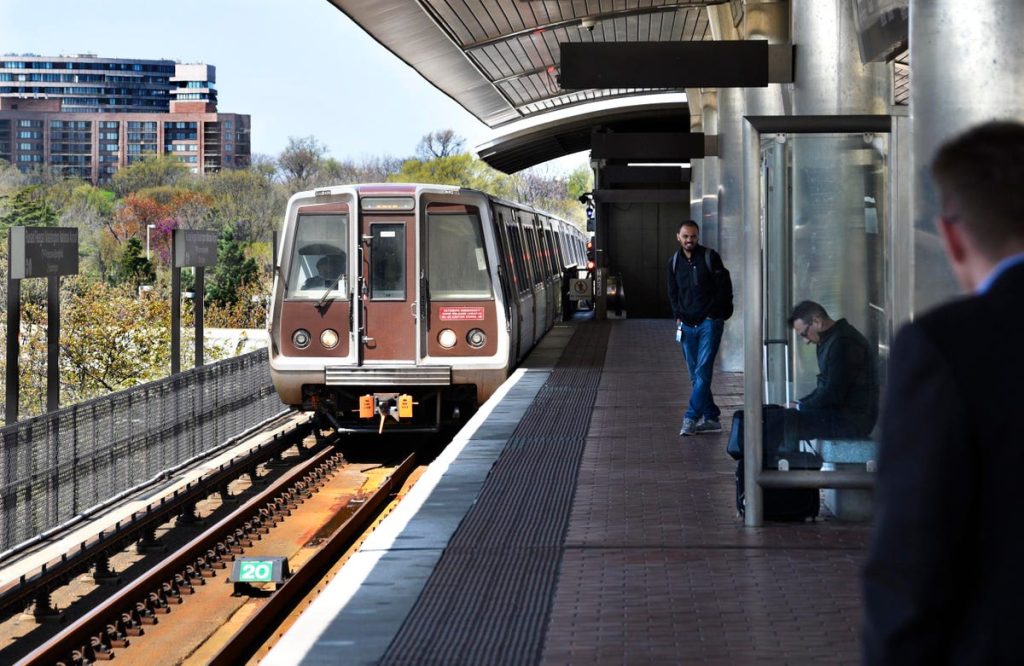Improving digital payments on transit could be seen as a major green issue, Aaron Klein at the Brookings Institution suggests in a recent paper, “How Better Payment Systems Can Improve Public Transportation”.
Current systems are often too slow, they are almost always too expensive in their charges for small value transactions, and their requirements are complex with different fares for seniors, students and disabled individuals.
“The existence of these numerous fare categories can present a challenge for transit agencies looking to implement open payments,” he added, while citing efforts in California to provide confirmation of riders’ ages so they could receive age-related discounts. Some agencies are working with local colleges to provide student discounts.
“Federal, state, and local governments have all embraced public transit to serve multiple goals of providing basic mobility, supporting equity, catalyzing economic growth, and creating a more sustainable transportation system,” he writes. “…payment systems have to become more efficient and effective for low-dollar, high-volume transactions, a key characteristic of transit fare payments,” he added.
A solution will probably require an open loop system so the payment method can be used for multiple types of purchases, not just transportation. Smartphone apps to store personal information such as age, enrollment at a qualifying school, or disability status would also be useful in, although complicated.
Don’t expect quick progress.
Klein notes that companies supplying fare collection equipment are fairly rare in the U.S. and competition is limited.
“These factors can add years to the process of implementing open payments.”
But, he writes, the federal government’s infrastructure bills provide a unique opportunity for transit agencies — many still using cash fare boxes — to upgrade their ways of collecting payments.
A key goal should be getting rid of cash which is slow to collect, expensive to manage and prone to equipment breakdowns.
“Paying cash to board a bus requires extra time which adds up to slower service for all riders, vending machines that use dollar bill readers can jam, rendering them out of service and requiring repairs, while providing change in coins can tax cash storage capacity, particularly when some customers are using $10 or $20 bills to purchase $2 trips.”
Old systems add up to hefty costs for transit providers. He cites the experience of Greater Richmond (VA) Transit Company which collected $7.4 million in 2019 but spent $1.6 million to do it.
In an age when financial inclusion is a widely proclaimed goal, Klein has consistently been aware of the real financial challenges that poor people face. Offering discounts for bulk purchases of tickets rewards people with ample funds, while denying any similar benefit to riders who live on the financial edge, as he puts it. New York’s MTA recently eliminated its 5% fare bonus to users who purchased or reloaded high value fare cards.
“…These benefits are likely going to riders who can afford to pre-position funds, which may be a mix of wealthier riders and heavy transit users.”
The Durbin Amendment on debit adds complexity for transit systems. Poorer people are more apt to use debit cards, and the explosion of fintechs has changed the economics of interchange fees since banks with less than $10 billion in assets can charge higher fees than larger banks.
“Many fintechs partner with smaller financial institutions creating the opportunity to earn higher debit interchange fees than if that consumer was with a larger financial institution…heavy debit users are typically lower income than heavy credit card users.”
Less affluent individuals are also cautious about using bank accounts with their unpredictable high fees and penalties.
“Between 15-20% of those with bank accounts still use check cashers, money transmitters, or payday lenders for financial services as well,” he writes. “About one in twelve American households rely on overdrafts frequently (defined as ten or more a year), sometimes resulting in high fees for small dollar transactions. This data illustrates that for many families, basic banking and payment services can be high cost.”
The costs of banking are a reason some people use payday lenders. … “paying $3.50 to move $200 instantly can make a lot of sense as opposed to dealing with a single $35 overdraft fee.”
Klein thinks the financial services sector has some potential gains from improving services to transit where it can reach people who might not be customers now.
“The benefits for the financial sector include access to the transit market in which millions of payment transactions are made each day and the potential to introduce unbanked or underbanked individuals to affordable financial products. New payment technology can make the system more accurate, faster, and easier for riders, transit providers, and third parties.”
Supporting transit also ticks the increasingly popular ESG box. Citing a Department of Transportation note, Klein writes that “switching to riding public transportation is one of the most effective actions individuals can take to reduce their carbon footprint.”
It is also a step to the oft-proclaimed goal of financial inclusion. “Nationwide, 60% of transit riders are non-white. Black riders represent 24% of those who use transit despite making up only 12% of the total U.S. population. Bus riders are even more likely to come from communities of color: 30% of bus riders are Black, and another 21% are Hispanic.”
Read the full article here



